Learn How to Make a Railroad Spike Knife with our expert forger! Just Hit Play!
How to Make a Railroad Spike Knife | DIY Knife Making
Welcome to the How to Make a Railroad Spike Knife video lesson course! In this series we'll take you through all the steps you'll need to craft your very own bespoke railroad spike knife. Beyond just looking badass, these knives are also very functional.
Amazing: Never Spend Another Dollar on Batteries Again!
Our blacksmithing expert, Aram Nigoghossian, brings us right into the fires at Adam's Forge in Los Angeles. From the history of blacksmithing, to the material required for this build, to the detailed step-by-step process that will result in one hell of a cool knife, this series is a must watch for knife fans!
But before we get going, it bears repeating one more time: we are making KNIVES out of RAILROAD SPIKES!!! Yeah, this is some straight up man s**t going on. So tuck in your beards, put on your overalls, and get your metals ready. It's time to light the forge fires.
Start watching the entire series here. Or click through to each Lesson below.
Want one of these knives for yourself? Aram is in the middle of building a new site to order them, but in the meantime, you can email him directly at [email protected].
Lesson 1: How to Make a Railroad Spike Knife | DIY Knife Making: Overview
In this lesson, we meet Aram… a badass, knife-making, epic-beard-wielding blacksmith at Adam's Forge in Los Angeles. Before he jumps into the intracacies that go into knife making he gives us a little background information on himself and Adam's Forge, the only true blacksmithing community in Los Angeles. For Aram, a lifelong knife enthusiast, blacksmithing was a great option for him to learn the craft of bladesmithing. To be able to ‘move metal' well, to mold it into a variety of shapes is what Aram believed would best prepare him for eventually becoming an excellent knife maker. Thus, his journey to Adam's Forge. Aram gives us a little bit of information on the course structure at Adam's Forge and tells us why this schooling community was so beneficial to him.
In This Video:
- Meet out knife making expert
- Background information on Adam's Forge
- How to become a great bladesmith
- Why Adam's Forge is such a great blacksmithing community
- Information on the courses at Adam's Forge
- And more…
Lesson 2: How to Make a Railroad Spike Knife | DIY Knife Making: Choosing Your Spikes
Choosing your spikes to use for your knife is a crucial step. Some people prefer to purchase newly manufactured spikes, while others prefer older, rusty looking spikes that give that rustic feel. Regardless, they are quite easy to find on the internet. In this lesson, Aram takes us through his approach for choosing the right kind of spike. From the size, to the color, to the overall structural integrity of the metal, you'll learn all kinds of tips on how to choose a great spike to make a sweet knife. After that, Aram shows us the difference between a ‘full twist' and a ‘half twist' handle so that you can learn how to customize your knife to your liking. And finally he explains why working the metal of a railroad spike is a bit different that normal ‘High Carbon' metals that we find in knives.
In This Video:
- Choosing the right spike
- Rustic v. New spikes
- Full Twist v. Half Twist handles
- What the ‘HC' means on a railroad spike
- And more…
Lesson 3: How to Make a Railroad Spike Knife | DIY Knife Making: Marking Your Handle
Now that we have chosen our spikes, we are ready to start marking out the specifications of the knife itself. The first step is marking your handle. We all have different hand sizes and personal preferences, so this is an important step to get right to make the knife more than just an ornament. The average railroad spike is about 6 inches in length. BUT it is crucial to keep in mind that it will elongate through the smithing process. We will also go over tips on how to forge a slip guard so that your hand will not slip onto the blade. For Aram, that is the most difficult part of the blade-making process. The final thing this video covers is CRUCIAL!! Safety! Safety! Safety! Tie back your hair, your beard, wear eye protection, gloves, etc, etc… we're dealing with freaking molten metal after all!
In This Video:
- Marking your handle
- Punching your mark v. Using carbon pencil for marking your handle
- The importance of a slip guard
- Safety tips before you start forging
- And more…
Lesson 4: How to Make a Railroad Spike Knife | DIY Knife Making: Lengthening Your Blade
This video throws us right into the heat. With Aram, our DIY knife making expert, we go through all the preliminary steps to lengthening the blade on what will become your knife. First things first… SAFETY! Once your beards are tucked away and your cool protective goggles are on we're ready to light up the forge, choose the right tongs, and get going. There are options for which tongs are best for making railroad spike knives and Aram gives his advice on which tongs are best. Then, it's time to jump in the fire. First, Aram shows us how to use the peen to elongate and widen the blade portion of the spike. At this point, it's not necessary to choose which side will become the sharp edge of the blade. What matters is getting the blade to the proper length and width. Aram then goes through the process and starts hammering away at the spikes to get them to the proper length.
In This Video:
- Lengthening your blade
- Which tongs to use
- How hot to have your forge
- What color your spike should be for hammering
- Peening your spike
- And more…
Lesson 5: How to Make a Railroad Spike Knife | DIY Knife Making: Drawing Your Blade Width
Once you have a length that you are happy with, it's time to start drawing out the width. In this video, Aram goes through how to get the proper width for your railroad spike knife. Using the peen, we'll be hammering along the longitudinal axis. Again, temperature is important, so make sure to follow Aram's advice closely… or else you'll just end up with a flimsy knife. And really, who wants that?!? After he goes over how to widen the blade, Aram spends a little time discussing which hammers he uses and why.
In This Video:
- The width of the blade
- Types of hammers
- And more…
Lesson 6: How to Make a Railroad Spike Knife | DIY Knife Making: Removing Peen Marks
In this lesson, Aram takes out his rounding hammer and removes the peen marks that were made during the lengthening and widening phases. Consequently, we'll also get a little bit of a widening of the blade during this process as well. Aram also talks about why removing the scale is a good idea, unless you are going for the rustic look, in which case the scale will actually be ok to keep on blade. We're getting closer! Keep taking notes so you can be sure to make an epic railroad spike knife.
In This Video:
- Remove the peen marks from lengthening and widening the blade
- Further widening of the blade with the rounding hammer
- The pros and cons of the scale
- And more…
Lesson 7: How to Make a Railroad Spike Knife | DIY Knife Making: Setting Your Guard
Setting your guard is a bit of a delicate process, but one that is crucial for the safety of your wielding hand! In this lesson, Aram shows us exactly how to set a guard on our railroad spike knife. This is the next step in the DIY knife making process and will ensure that our hands won't slip into the blade once the knife is complete. There are some important steps that can't be skipped so make sure to pay close attention. Take notes, get your forge going, whatever you have to do to get yourself ready… cause this lesson is quite detailed!
In This Video:
- Setting your guard
- Using the beveled portion of the anvil
- Heating and reheating the spike to keep it hot for optimal working
- Indexing your guard setting for precise indentation
- And more…
Lesson 8: How to Make a Railroad Spike Knife | DIY Knife Making: Tapering Your Handle
In this lesson, we see Aram taking us through the next step of tapering the handle on our spike knives. This step is important to taper the indentation that we made by setting our guard. So rather than have a large indentation between the handle and the blade, what we want to see is a gradual tapering from the handle into the blade, while still preserving the protection that the guard provides. This is a process that takes some time to get right but it's really not that difficult. Just pay attention to our master blacksmith, Aram, and you'll forging in no time!
In This Video:
- Tapering your knife handle
- Judging the right gradient
- And more…
Lesson 9: How to Make a Railroad Spike Knife | DIY Knife Making: Forging the Blade – Part 1
Now we get into the nitty-gritty. Forging the blade is a delicate process. It's more than just scraping away until you have a pointy knife! In this video, Aram takes us through how to make a straight blade. He goes over how to ensure that your blade will remain straight through the beveling process, and he even gives us a little insight into how to make a curved blade. But for his purposes, in this video, he concentrates on the straight blade. The beveling process takes a little bit of time, but with Aram's help you can bypass many potential problems as you make a sweet knife blade.
In This Video:
- How to forge your knife blade
- Straight v. curved blade
- Beveling
- And more…
Lesson 10: How to Make a Railroad Spike Knife | DIY Knife Making: Forging the Blade – Part 2
In this second part of the Forging the Blade portion of our video series, Aram continues to bevel the blades, all the while providing all kinds of wisdom on what to look out for and how to make the best possible blade. Once you're happy with the shape of your blade, then it's time to straighten your blade into its final alignment. Aram also gives a little tutorial on annealing, which is the process of allowing metal to cool slowly, in order to remove internal stresses and toughen it.
In This Video:
- Forging your blade
- Beveling
- Heat Treating
- Annealing
- And more…
Lesson 11: How to Make a Railroad Spike Knife | DIY Knife Making: Putting a Twist in the Handle
Once the knives have cooled down and the metal has annealed properly, then we are able to start putting a twist on the handle. In this video, Aram explains the quick process of putting the twist on a handle. It bears repeating that this is a very quick process, so understanding what you'll be doing ahead of time is crucial to ensuring that you can make clean twisted handle. Thankfully, Aram takes us through a detailed step-by-step routine. All you have to do is pay attention and follow the master's advice! We've made it that simple for you. So get ready to take some notes. It's time to twist your handle!!
In This Video
- Putting a twist in your handle
- Full twist
- Half twist
- Right-handed v. left-handed twist
- And more…
Lesson 12: How to Make a Railroad Spike Knife | DIY Knife Making: Curving the Handles
Now we're at the point in the knife-making process when we can start to customize our knife according to our likes. In this video, Aram adds a little curve to his knife handles. This isn't really anything other than a personal preferences. Of course, you can keep your handle straight if you'd like. But if you're looking for another option, a simple way to add a little more aesthetic appeal to your knife, then add a little curve to your handle! As Aram says, “Have fun with it!”
In This Video:
- Curving the handle
- Special tool
- Straight v. curved handle
- Have fun with your creation
- And more…
Lesson 13: How to Make a Railroad Spike Knife | DIY Knife Making: Aligning the Blade
Once your bends are in your handle, it's time to check that your handle is in line with your blade. Aram recommends that at this point you inspect your knife from every angle possible so that you can get the most accurate perspective on your knife and what needs to be done to get it where you ultimately want it. Remember this step is all about fine tuning. So we won't be hammering too hard or making any large modifications. But the little, simple details are what can make your knife really shine. Pay close attention to make sure that the alignment is right, and make the necessary, small corrections as you spot them. Thankfully we have Aram to be our guide.
In This Video:
- Aligning your blade
- Aligning your handle
- Small modifications to get your blade ready to finish
- Tips on the best way to straighten your knife
- And more…
Lesson 14: How to Make a Railroad Spike Knife | DIY Knife Making: Brushing and Grinding Your Blades
Now our knife has it's basic form. The blade is straight, the handle has its twist, and we are ready to start adding that shine! In this video, Aram brushes and grinds his blades. He goes through the preliminary safety steps to make sure your eyes stay protected and then jumps right in, giving his knives that professional quality brush. After he removes the scale, it's time to grind your blade to make it sharp. It doesn't take much to grind the blade, and it is a very exact process, so make sure you are paying close attention here!
In This Video:
- Brushing and grinding your blades
- Metal brush safety
- Getting the right shine on your blade
- And more…
Lesson 15: How to Make a Railroad Spike Knife | DIY Knife Making: Heat Treating
This step is all about adding the final strength to your blade. Here, Aram shows us exactly how to heat treat our knives. He covers critical temperature, magnetism, and using super quench solution to get your blade to a proper strength. There are multiple ways that this step can be done. Some blacksmiths like to anneal at this stage and some don't feel the need. Aram will give you his insight into the debate and the reasons why he chooses NOT to anneal at this point in the process. Once this step is done, you'll have some seriously strong steal!
In This Video:
- Heat Treating
- Magnetism and critical temperature
- Super quench solution
- And more…
Lesson 16: How to Make a Railroad Spike Knife | DIY Knife Making: Finish Grind and Patina
This grind is the finish grind. Once your blade is hardened you have just two steps left until you're knife is done! It's important during the finish grind to keep your knife cool. Aram explains why and how in this video, as well as demonstrating the proper grinding technique.
In This Video:
- Finish grind
- Keeping your knife cool
- And more…
Lesson 17: How to Make a Railroad Spike Knife | DIY Knife Making: Polish – Final Step
Once you have a finish grind, the final step is to polish your knife. In this final video in our DIY Railroad Spike Knife Making Video Series, Aram gives us a demonstration on how to best polish your knife. After that, you're gonna want to coat your knives with a special oil so that your knives don't rust… heck, Aram even gives you an organic alternative if you plan to use your railroad spike knife on food! And then, once you're done with this step, you'll be ready to put your bespoke knife on display!
In This Video:
- Polishing your knife
- Coat with oil to prevent rust
- Organic alternative oil coats
- And more…
We hope you enjoyed this video lesson series on how to make your own railroad spike knife. Please let us know your thoughts, comments, hopes, dreams, and anything else. And if you'd like to write some of your own tutorials for PS, please pop on over to our contributor form. We love hearing from all of you.

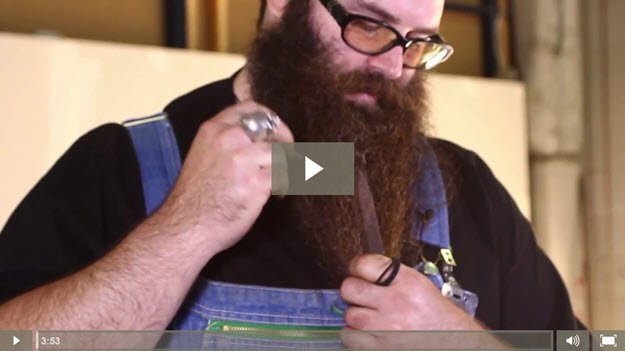
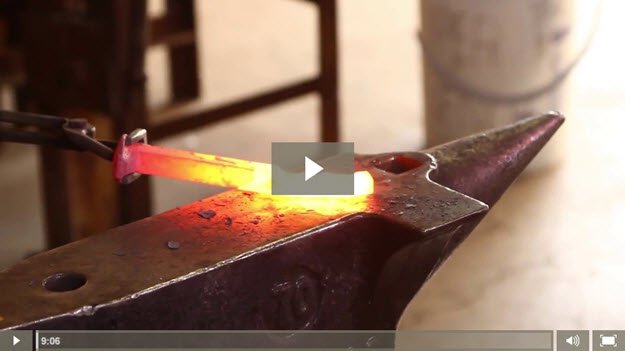
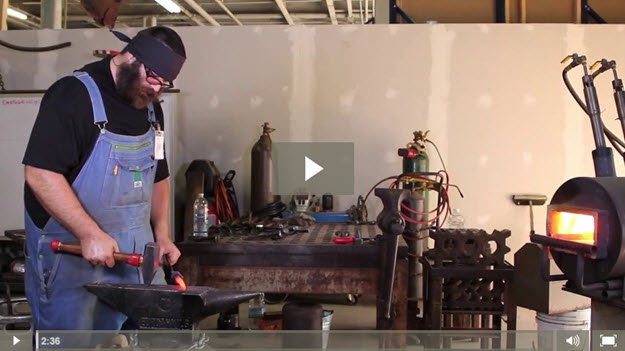
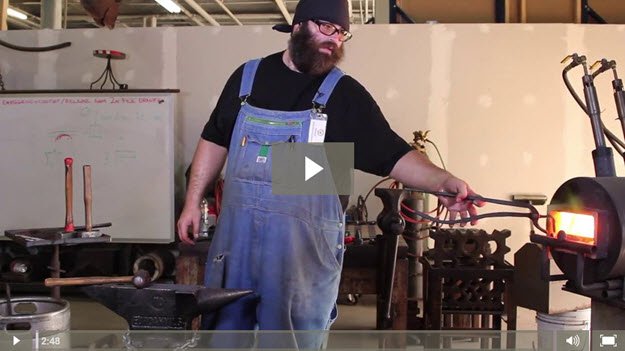
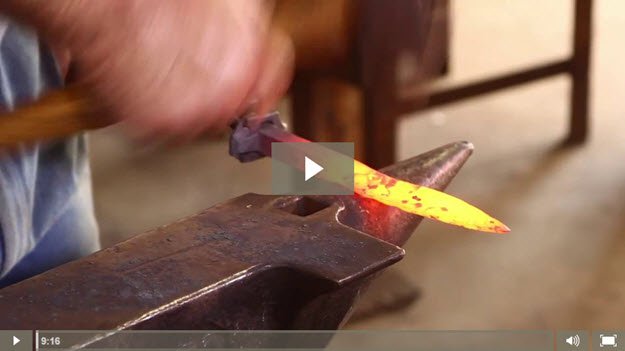
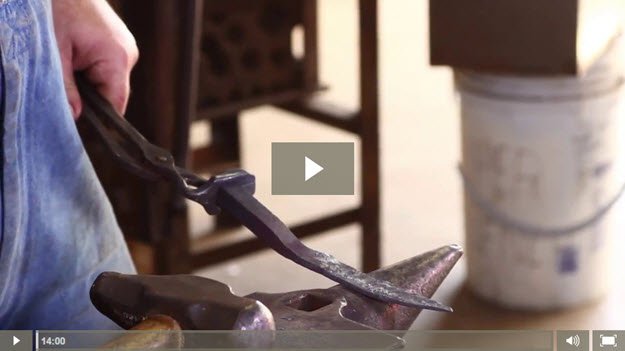
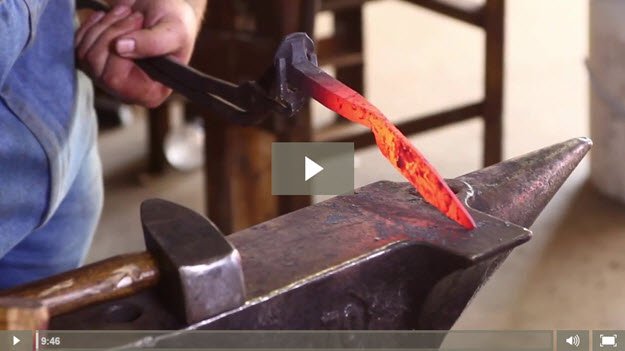
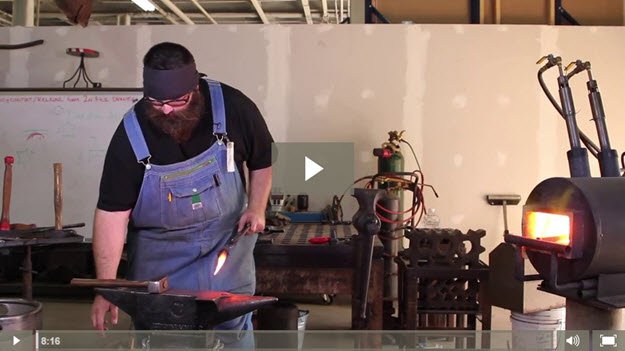
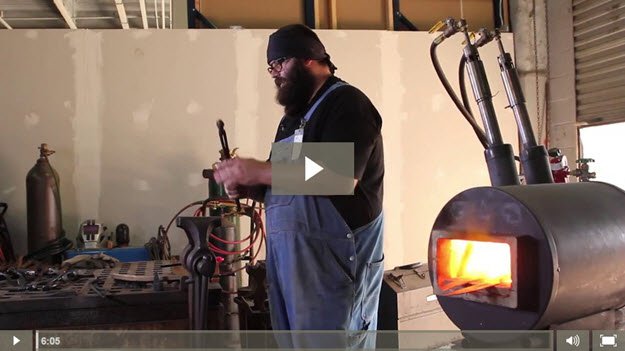
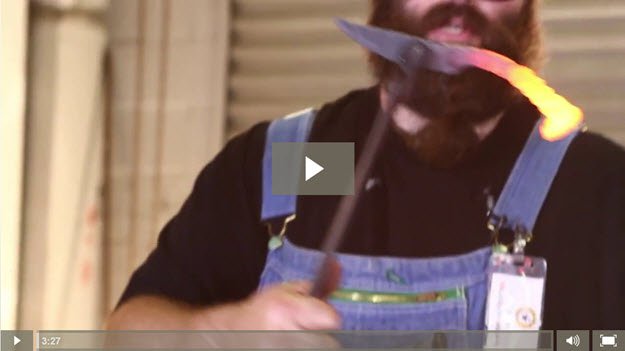
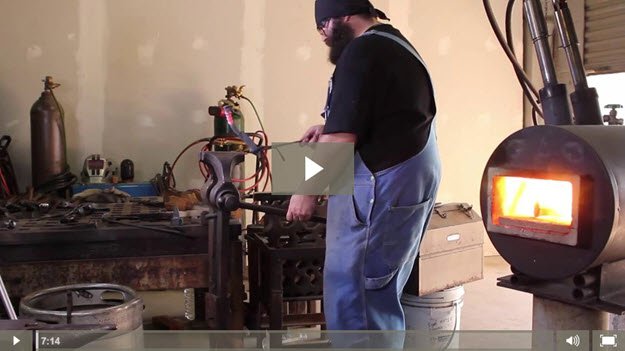

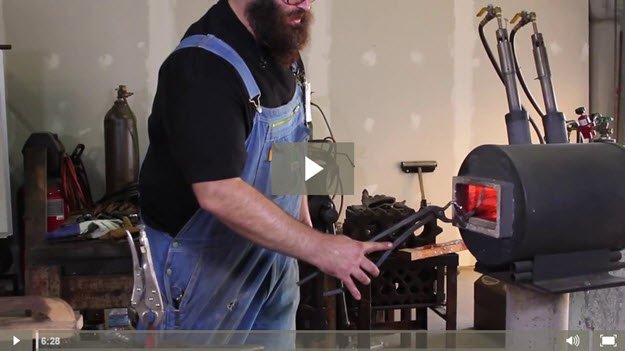
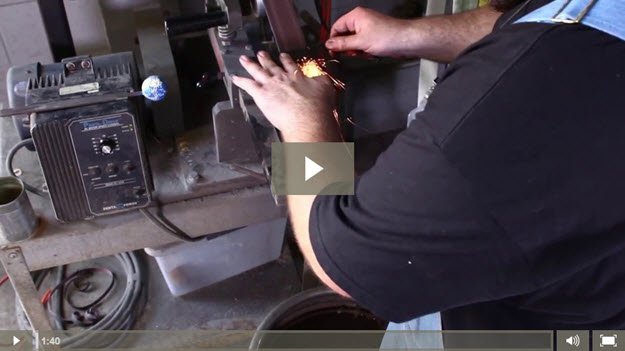
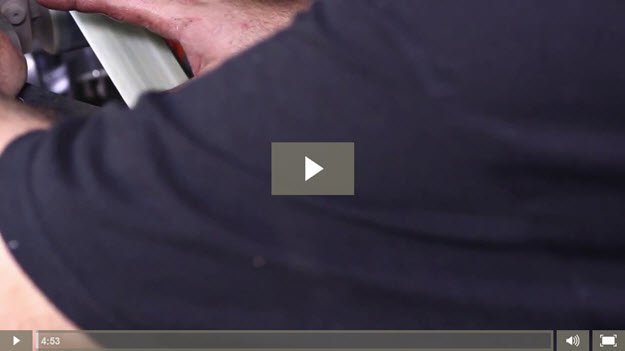
Awesome videos for making a knife w/railroad spike. Thanks for such a great set of videos.
Just can’t find the website Aram said was his website called? fistfullofspikes.com?
Very interesting series of videos! Thanks, Joe!
Yes interesting, but why make it into 17 different videos. It seems plenty small enough to make into one dvd file, even if you have to put this for sale. Makes it so much easier on your readers to get the whole lesson instead of trying to jump through hoops to download them
Wicked looking knives, it would be very cool to try and make one, but realistically, just finding an Anvil that would do the job would be a real task, not to mention the other equipment needed, but if you did have that stuff or could get it, I know that skill is required, in fact a good bit of skill is required, still very nice to share the video that is quite the nice thing to do.
It’s no easy task – that’s for sure. But once you have the right supplies, and practice, it’s all worth it! Find a local forge and see if they have any lessons you could take.
This is an outstanding tutorial!!!The camera work and the audio on this presentation makes watching this presentation most enjoyable.
The presentation of instructions on how to take a railroad tie and make a beautiful knife was so well done that even a novice would not be intimidated to try to learn this skill. As was noted, our first attempt to learn this skill will not look like the knife we see being made.
I took note of the tools he used and how one could find alternatives to accomplish such a task.
Knife making is a most valuable skill and I find this tutorial a gift. Aram Nigoghossian is an outstanding instructor.
This is a great site.
Thanks for the wonderful feedback Kathy!
Happy Homesteading
Can’t seem to bring up Adam’s website to look at some of his other knives to look at? Really enjoyed his presentation . I too have been always interested in knife making!!J
Hi Joel, thanks for the feedback! Aram is in the middle of building a new site to order his work, but in the meantime, you can email him directly at [email protected]
Same problem locating his website. Could someone post the correct web address to view his products?
Hey Mike, sorry about that. Aram is in the middle of building a new site to order them, but in the meantime you can email him directly at [email protected]
Couldn’t find website I would love to buy a couple of his knives if I could
Awesome! Aram is in the middle of building a new site to order them, but in the meantime, you can email him directly at [email protected]